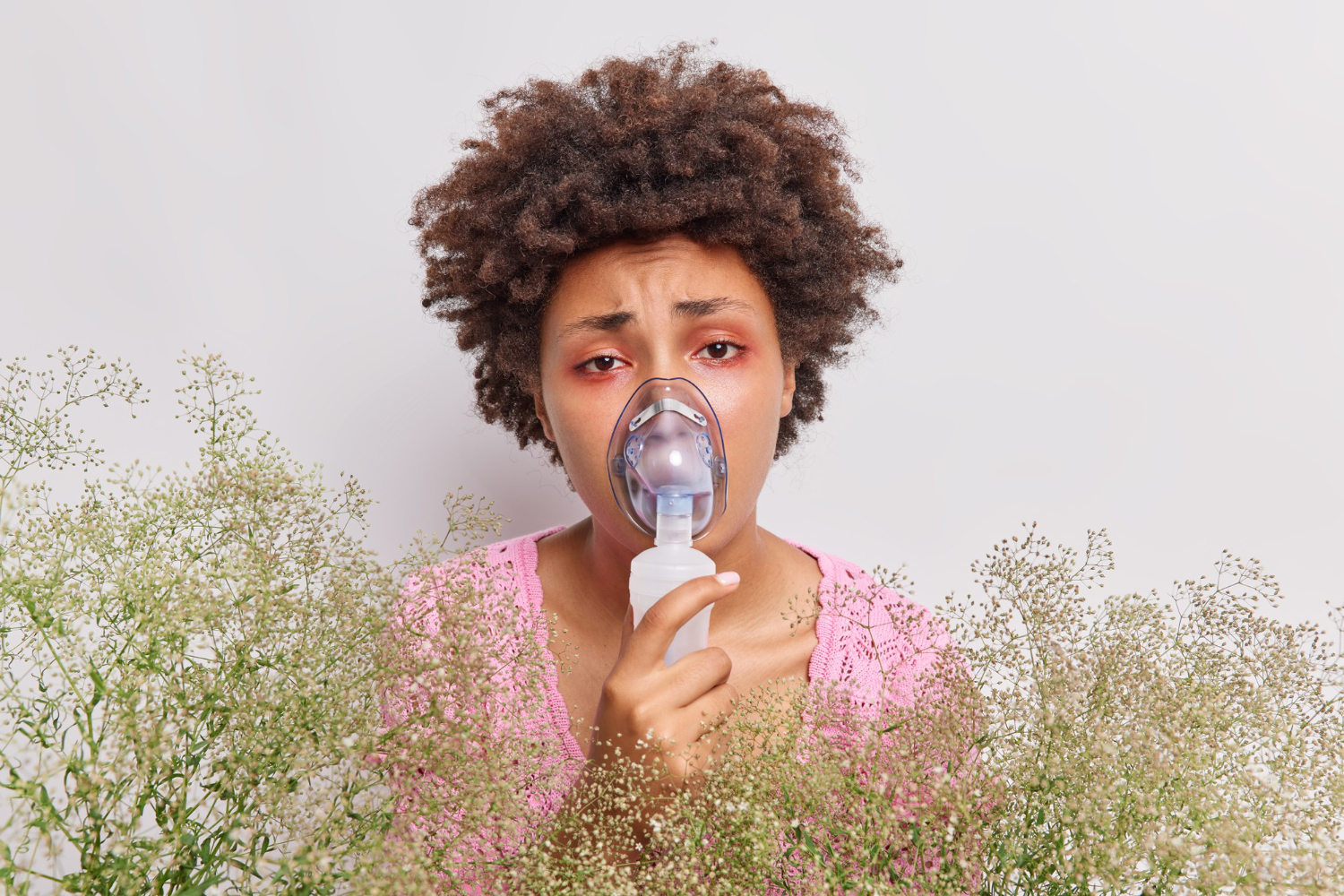
Both conditions involve hypersensitive immune responses. When the body misidentifies harmless substances as threats, inflammation starts. Allergies affect the skin, sinuses, or digestive system. Asthma targets the airways. Yet, both follow the same immune pathways. Mast cells release histamine. Airways swell. Mucus builds. Breathing becomes restricted. The connection isn’t coincidental—it’s biological.
Allergic asthma is the most common form of asthma diagnosed worldwide
This type of asthma is triggered by allergens like pollen, dust mites, or pet dander. Breathing in allergens causes airway inflammation. Tightness follows. Wheezing starts. The lungs react as if under attack. Not every asthma case is allergic. But most childhood cases are. Identifying allergens becomes part of asthma control.
Exposure to allergens can trigger asthma symptoms even without prior lung disease
People with allergic rhinitis sometimes develop breathing problems. Sneezing leads to coughing. Itchy eyes precede wheezing. The lungs join the response. Inflammation spreads downward. This transition from allergies to asthma isn’t rare. It’s called the “allergic march.” Early symptoms evolve into airway sensitivity over time.
Pollen, mold spores, and dust mites are frequent culprits in both allergy and asthma cases
Pollen floats in spring air. Mold hides in damp spaces. Dust mites thrive in bedding. All trigger immune responses. For allergic asthmatics, exposure causes chest tightness. For others, it starts with a runny nose. Avoiding triggers often helps both conditions simultaneously. Allergy control reduces asthma attacks.
The same antibody, IgE, plays a key role in both allergy and asthma flare-ups
IgE recognizes allergens. It binds to mast cells. Upon repeat exposure, histamine is released. That causes swelling, mucus production, and spasms. The cascade leads to sneezing—or shortness of breath. IgE is the common thread. Elevated levels are often found in patients with both conditions.
People with seasonal allergies may notice worsening asthma during high-pollen months
Spring brings more than flowers. It brings risk. Trees, grasses, and weeds release pollen. Sensitive individuals struggle. Their lungs react to airborne particles. Asthma becomes harder to control. Inhalers work harder. Rescue medication use increases. This pattern repeats yearly unless preventive steps are taken.
Nasal congestion from allergies forces mouth breathing, which worsens asthma symptoms
When the nose is blocked, airflow shifts. Mouth breathing dries the airways. This irritates the lungs. Asthma symptoms flare. The airway loses its moisture. Cold, dry air worsens inflammation. Decongestants help. So does saline rinsing. Fixing the nose helps the lungs.
Skin tests and blood tests help identify allergens that worsen asthma control
Allergy testing isn’t just for sneezing. It clarifies asthma triggers. Doctors test for common allergens. Dust, mold, trees, pet dander. A simple test guides long-term management. Knowing what to avoid changes everything. Medication becomes more targeted. Prevention becomes possible.
Allergy shots can reduce asthma symptoms by desensitizing the immune system gradually
Immunotherapy exposes the body to allergens in tiny, increasing doses. Over months, the immune system adapts. Reactions shrink. Asthma flare-ups lessen. This isn’t a quick fix. It takes years. But results can be long-lasting. It’s most effective when started early in life.
Antihistamines treat allergies but don’t directly address airway inflammation from asthma
Antihistamines stop sneezing and itching. But they don’t open airways. Asthma needs inhalers. Bronchodilators relax the lung muscles. Steroids reduce swelling. Antihistamines help indirectly by reducing triggers. But they’re not a substitute for asthma treatment. Both must be addressed separately.
Inhaled corticosteroids remain the cornerstone of long-term asthma control
These medications reduce inflammation deep in the lungs. They prevent daily symptoms. They reduce emergency visits. They lower sensitivity to allergens. Used regularly, they keep airways open. Skipping doses weakens protection. They’re safe long-term under medical supervision. They don’t treat allergies, but they stop reactions from spreading.
Biologic therapies now target specific pathways involved in allergy-induced asthma
New drugs block IgE or interleukins that drive inflammation. They reduce asthma attacks in severe cases. They’re injected monthly or every few weeks. They’re costly but effective. They’re used when inhalers fail. Biologics offer hope for those with both severe asthma and strong allergic responses.
Children with eczema are more likely to develop asthma and allergies later in life
This progression is called the “atopic march.” It starts with skin inflammation. Then comes allergic rhinitis. Then asthma. Each condition primes the immune system further. Early intervention might slow the march. Moisturizing the skin. Avoiding known triggers. Watching for early symptoms matters.
Exercise, cold air, and stress can worsen symptoms if allergy control isn’t in place
Running in pollen-heavy air. Breathing deeply in winter winds. Feeling anxious before a presentation. All increase inflammation. Without allergy control, asthma reacts harder. Prevention starts with awareness. Planning workouts. Wearing scarves. Using inhalers preemptively. Every factor counts. They work together, not separately.
Indoor air quality directly influences both allergy flare-ups and asthma attacks
Dust collects on rugs and curtains. Mold grows behind tiles. Air filters matter. So does ventilation. Keeping windows open helps. But not during pollen season. HEPA filters trap particles. Dehumidifiers remove moisture. Clean air helps both lungs and sinuses.
Pets can worsen both allergic and asthmatic reactions, especially in enclosed environments
Cats, dogs, and birds shed dander. Some people react to saliva or urine proteins. Pet hair carries allergens. Bedrooms should be pet-free. Air purifiers reduce exposure. Bathing pets helps. But in sensitive patients, avoidance remains the best option. Even brief exposure can trigger hours of symptoms.
Weather changes, especially humidity and storms, can trigger asthma in allergy-prone individuals
Thunderstorms stir pollen. They break it into smaller particles. These enter lungs more easily. Humidity thickens air. It clogs nasal passages. Barometric shifts affect sinuses. Asthma worsens in storms. Allergy control becomes critical during seasonal shifts. Watch forecasts. Prepare accordingly.
Food allergies don’t cause asthma—but can complicate attacks if a reaction spreads
A peanut reaction can trigger wheezing. Not because of asthma—but because of systemic inflammation. Airways swell. Mucus builds. Breathing becomes labored. Asthmatics with food allergies face greater risk. Carrying epinephrine becomes vital. So does avoidance. Labels must be checked twice.
Treating allergies improves sleep, energy, and day-to-day asthma stability
Unmanaged allergies keep people up at night. That weakens lung function the next day. Fatigue lowers immune resilience. Rest helps recovery. When allergies improve, sleep returns. So does breathing. In asthma management, every system supports another. Nothing functions alone.
Source: Allergist in Dubai / Allergist in Abu Dhabi
